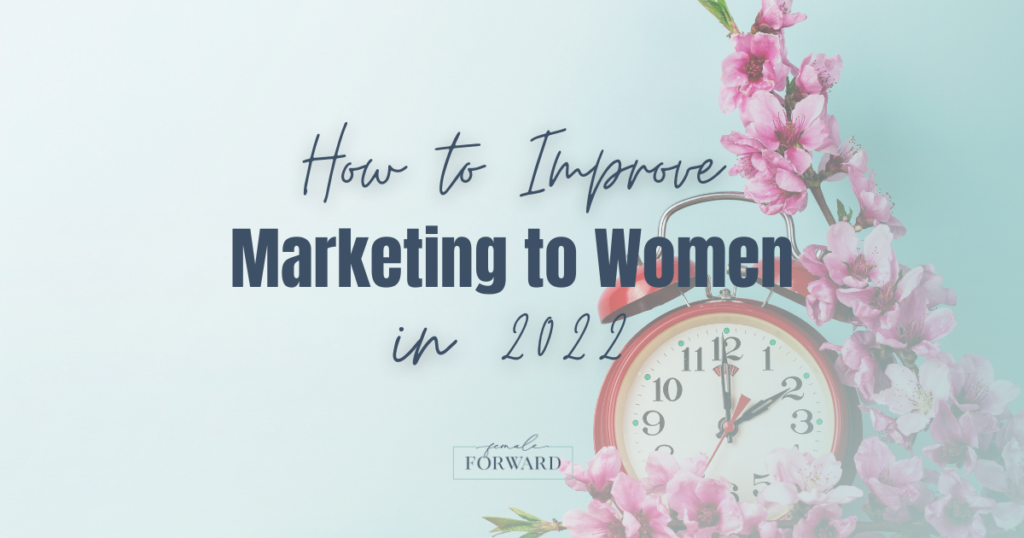
How to Improve Marketing to Women in 2022
Missed Opportunities and Why is Marketing Still Dismissing Female Consumers?
You might expect that the world has come a long way in terms of equality, feminism, and inclusivity. I mean, it’s almost the year two thousand twenty-two! In many ways, much has improved, but as far as marketing is concerned, very little has truly changed. This is a bigger problem than simply brands selling products and missing out on effectively connecting with the entire female demographic, but marketing plays a major role in the way society views women and more or less reflects current social norms.
So, let’s take a look at some of the recent ways brands have hit and missed with women.
In 2019, the Geena Davis Institute on Gender in Media found that ads up for awards at the prestigious Cannes Lions advertising festival depicted male characters working almost twice as often as female characters. Male characters also outnumbered female characters two-to-one and had twice as much screen time and speaking time.
How exactly does marketing to men differ from women?
For men, the imagery and messaging is depicting individualism, strength, and power. Whereas for women, it’s almost entirely about being beautiful for men and therefore dependent on men. However, when you talk to women, they care much more about feeling comfortable in their own skin.
Some brands, such as Third Love (a more comfortable, less sexy lingerie brand) and Frida Mom (postpartum care) are laser-focused on this and doing a fantastic job. However, the female consumer is a primary, not a niche market or a segment, and it’s only growing in numbers and purchasing power which should be a clear signal to major Fortune 500 CPG brands.
It’s important to note for brands and wealth management firms alike to take note that women are stepping into a new era of wealth with over $72 trillion worth of private assets globally according to research from Bank of America.
Big missed opportunities by big brands
I’ve noticed some big missed opportunities that I’d love to help bring to marketing directors’ attention. Take these insights into consideration and it’s a win-win for being a positive change in the world and market and being highly beneficial to your revenue.
- 25% of Americans are women over 40. That’s right, and you aren’t winning their dollars by portraying young females being ‘sexy’ or cooking in the kitchen or laughing in the background (20 percent of commercials depict a woman with her head thrown back laughing. Only 3 percent of ads are women being funny themselves, according to studies in the book “Brandsplaining: Why Marketing is (Still) Sexist And How To Fix It”).
- Only one in 10 ads features a woman who’s over 50 and a huge percentage of American females (over 25%) are tired of looking at women under 30 in advertising.
What can your brand do to improve marketing to women in 2022?
Looking ahead to 2022, here is a quick checklist of a few ways your brand can improve marketing to women:
- Invest in your marketing departments’ education and leadership development. Not with new digital tools or upskilling multi-tasking roles, but in modern market research and in the ability to answer the big questions on every CMO and CEOs’ minds: “How can we adjust our strategy to grow and expand into new markets while addressing the important societal issues that our consumers are demanding action for?” (Hint: This is exactly why we offer Brand-Building Training).
- Toss sex appeal out the window and start creating advertising campaigns that speak to women’s true interests: self-confidence and comfort, respect, and financial independence. (Hint: Don’t default to portraying women in stereotypical roles, such as in the kitchen).
- Portray women as educated (they are, and the female demographic has long been outpacing educational attainment by men) and in leadership roles (only 4 percent of ads aired in 2016 showed women in leadership positions, according to a study by Ebiquity).
- Make women feel that they are seen just the way they are, not that they have to change their behavior or looks to achieve something, simply put, stop subtly (or less subtly) telling women how to be or what to do.
- Look to social media for a more unbiased reaction to many big brands advertising campaigns. Social media has provided an outlet for honest discourse into what women like and don’t like about your brand’s messaging.
